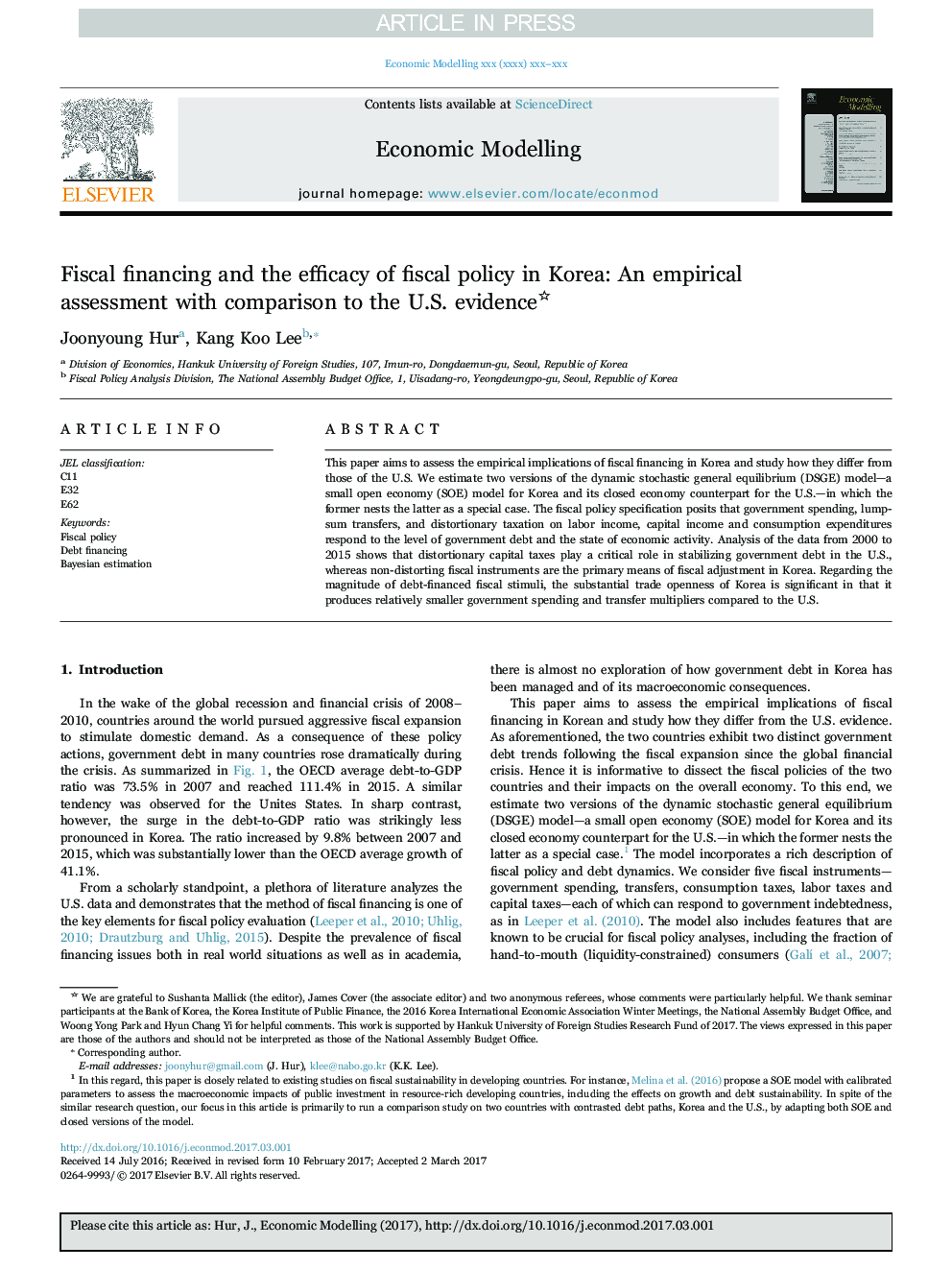| Article ID | Journal | Published Year | Pages | File Type |
|---|---|---|---|---|
| 5053166 | Economic Modelling | 2017 | 14 Pages |
Abstract
This paper aims to assess the empirical implications of fiscal financing in Korea and study how they differ from those of the U.S. We estimate two versions of the dynamic stochastic general equilibrium (DSGE) model-a small open economy (SOE) model for Korea and its closed economy counterpart for the U.S.-in which the former nests the latter as a special case. The fiscal policy specification posits that government spending, lump-sum transfers, and distortionary taxation on labor income, capital income and consumption expenditures respond to the level of government debt and the state of economic activity. Analysis of the data from 2000 to 2015 shows that distortionary capital taxes play a critical role in stabilizing government debt in the U.S., whereas non-distorting fiscal instruments are the primary means of fiscal adjustment in Korea. Regarding the magnitude of debt-financed fiscal stimuli, the substantial trade openness of Korea is significant in that it produces relatively smaller government spending and transfer multipliers compared to the U.S.
Related Topics
Social Sciences and Humanities
Economics, Econometrics and Finance
Economics and Econometrics
Authors
Joonyoung Hur, Kang Koo Lee,
